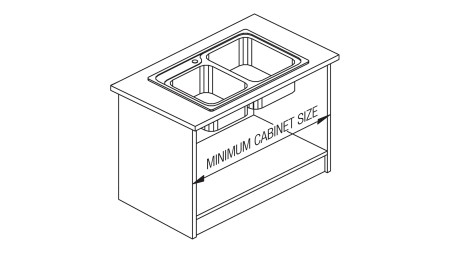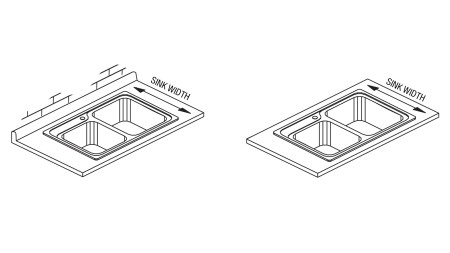Understanding kitchen sink dimensions
The standard sink size is about 22 inches long to 30 inches wide, but once again it’s crucial to take proper measurements. If you’re replacing a drop-in sink with rims, start measuring from the outer lip of the sink, not the basin itself. If you have an undermount sink, start measuring where the edge meets the counter.
Kitchen sink length:
This is how far a sink extends along the countertop. Fix your measuring tape to the left edge of the sink and stretch it over to the right. The standard length is 30-33 inches, but varies whether you have 1 or 2 bowls. Some double bowl models range up to 48 inches. A single bowl sink will have one basin. A double bowl has two basins side by side, so you can use one bowl to set dirty dishes and the opposite bowl for washing dishes by hand or rinsing produce.
Kitchen sink width:
To find the width, measure from the back edge of the sink to the front edge. The standard size is 22 inches.
Kitchen sink depth:
Find your sink’s depth by measuring the top edge of the sink down to the bottom. The standard depth is around 8 to 10 inches. Anything shallower than 8 inches will make it difficult for you to have enough space to wash dishes. The extra depth can make it easier to wash oversize pots, which is helpful for anyone cooking for a big family or entertaining guests.
/2-mid-century-kitchen---cabinets-image-450w-253h.jpg)

